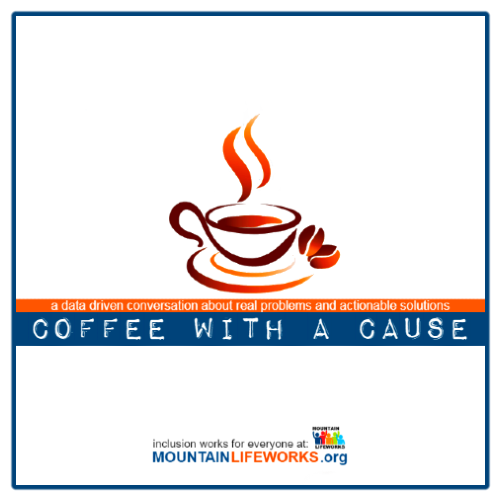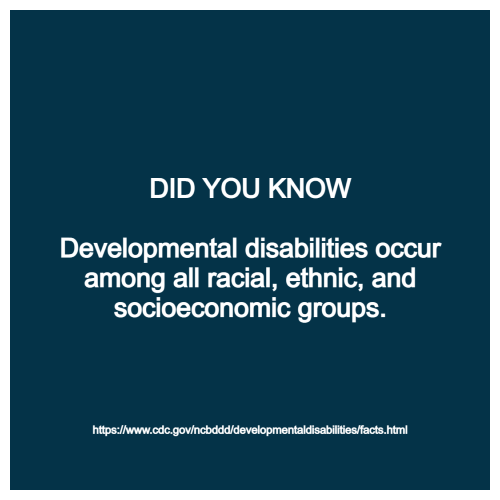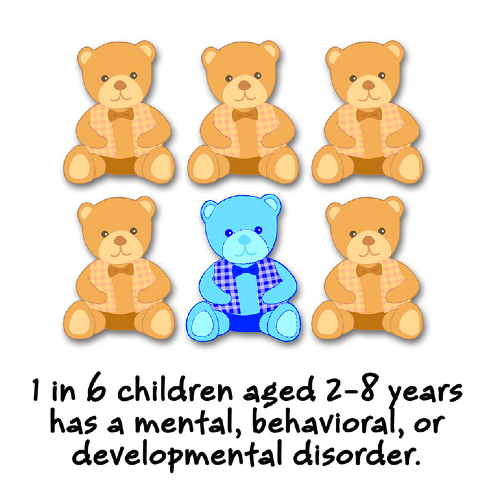
MARCH 2025 developmental disabilities
March is Developmental disabilities
Awareness Month. The term "developmental disabilities" is a
broader category of often lifelong challenges that can be
intellectual, physical, or both. "IDD" is the term often used to
describe situations in which intellectual disability and other
disabilities are present. Developmental
disabilities are a group of conditions due to an impairment in
physical, learning, language, or behavior areas including
Attention-Deficit/Hyperactivity Disorder (ADHD), Autism Spectrum
Disorders (ASD), Cerebral Palsy, Fragile X Syndrome, Intellectual
Disability, Language Disorders, Learning Disorders and Tourette
Syndrome.
One in six children in the
Child Development Specific Conditions | CDC
About Intellectual and Developmental Disabilities (IDDs) | NICHD
Developmental Disabilities | CDC
Developmental Disabilities Month | Mountain Lifeworks

Coffee with a Cause march 2025
Data shows early detection and intervention begins with a local doctors, school district and community centered board. The earlier the diagnosis the better the outcomes. Navigating healthcare, education and emloyment requires different services and supports based on the needs of the individual. There is no one size fits all solution. BLS data shows over half of workplace accommodations cost $0. It also at that those with disabilities and caregivers are more likely to be self-employed to meet both caregiving responsibilities and personal career goals.
While 1 in 6 children experience a developmental disability and require services in Colorado. 1 in 36 will have an Autism Sectrum Disorder. In a county with 600 families that's 100 kids requiring diagnostics and services. Mountain and rural counties struggle maintaining services due to the high cost of living and lack of affordable housing fuel high turn-over rates. As prevalence increases so do the demands for expertise and costs. These costs accelerate further exacerbated by inflation. If we already have waitlists how will added demands be met to benefit from "EARLY" intervention?
Medicaid HCBS Waiver Wait List, by States | KFF
State Health Coverage for Immigrants and Implications | KFF

Coffee with a Cause march 2025
Did you know
Anyone who has participated in an IEP meeting
knows it is supposed to be about what's best for a child, but it can
turn into a battle over budgets, expertise and service hours. That's
why more than half of all parents view IEP meetings as adversity
instead of assistance. With over 200 mental health diagnosis
combined with many documented comorbidities it is unrealistic and
unfair to expect any one school
district or mental health professional to be an expert in all of them. Mountain Lifeworks proposes
options to help meet growing demands while increasing transparency
and accountability. By complementing existing government programs with qualified private
sector solutions we can improve outcomes instead of paying more for the same results and
longer waitlists.
Mental Health By the Numbers | NAMI: National Alliance on Mental Illness
Remember a balanced approach uses verified data to identify problems and to propose actionable solutions. Only those willing to have difficult conversations can solve difficult problems. The first step to solving any problem is accepting the data indicating a problem... not blaming the messenger or method of delivery.
So join us for Coffee with a Cause and let's keep the conversation going each month with more data and actionable real life solutions!